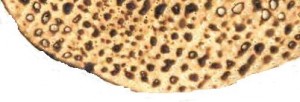Non-Gebrokts Food: The Newest Trend
What’s Behind the Explosion in Non-Gebrokts Products for Pesach?
In recent years, non-gebrokts food has become a major trend.
“People are noticing that matzah meal, a long-standing Pesach baking staple, is appearing less and less in packaged kosher-for-Passover products,” observes Rabbi Nachum Rabinowitz, OU senior rabbinic coordinator.
The OU, which certifies more than 600,000 products produced in 6,000 plants in over eighty countries, is also one of the largest certifiers of Pesach products—both gebrokts and non-gebrokts. Walk into the Passover section of any supermarket and you will find the OU certification symbol on a dazzling selection of non-gebrokts delectable jelly rolls, cookies and cakes.
“Many of the Pesach brands that used to prepare matzah-meal based cakes are no longer doing so,” says Rabbi Rabinowitz. “Companies are replacing matzah meal with potato or tapioca starch.”
As the Chassidic population grows (a much-cited 2011 UJA-Federation study revealed that Chassidim are the largest Orthodox group in the greater New York area), so does the number of non-gebrokts eaters. Yet religion isn’t the only cause behind the explosion in non-gebrokts products. Non-gebrokts cuisine is wheat-free; thus, the custom dovetails with another major food trend—the shift toward gluten-free eating.
Gluten, the protein that gives breads their elasticity, has been implicated as the cause of celiac disease, a digestive disorder which can cause a range of unpleasant symptoms. Relatively few people have true celiac disease, but a great many people have celiac-like symptoms. Upon the advice of natural-health practitioners or on their own advisement, many people have adopted the celiac diet, which consists namely of abstaining from foods containing gluten. That means that a lot of people are staying away from “gebrokts” all year round. In fact, some celiac sufferers have been known to amass a supply of gluten-free food during the Pesach season to last the year.
“More and more items are non-gebrokts, as suppliers want to cater to the gluten-free segment and non-gebrokts items have that crossover appeal,” says Yakov Yarmove, corporate business manager of ethnic marketing and specialty foods for the Supervalu supermarket chain, which has 1,800 stores in thirty-nine states.
Many Passover hotels now advertise non-gebrokts cuisine as a way to attract the largest number of potential guests. “It also gives the impression that the hotel is taking care of every kosher detail, such as glatt kosher, pas Yisrael, et cetera,” notes Rabbi Eli Gersten, OU rabbinic coordinator and recorder of OU policy. Not everybody is happy with the change, however. Jewish cyber message boards abound with complaints from disgruntled hotel guests upset that they had to endure the Sedarim without matzah ball soup.
Even for those who don’t “mish,” Yiddish slang referring to the practice of eating only home-made food on Pesach, non-gebrokts home cuisine has also evolved. Cookbook author Tamar Ansh has penned two best sellers containing more than 300 non-gebrokts recipes, such as ersatz knaidlach made from ground chicken.
Carol Ungar is a full-time mother and freelance writer living in Israel. Her work has appeared in the New York Jewish Week, Tablet, the Jerusalem Post and other publications and web sites.

